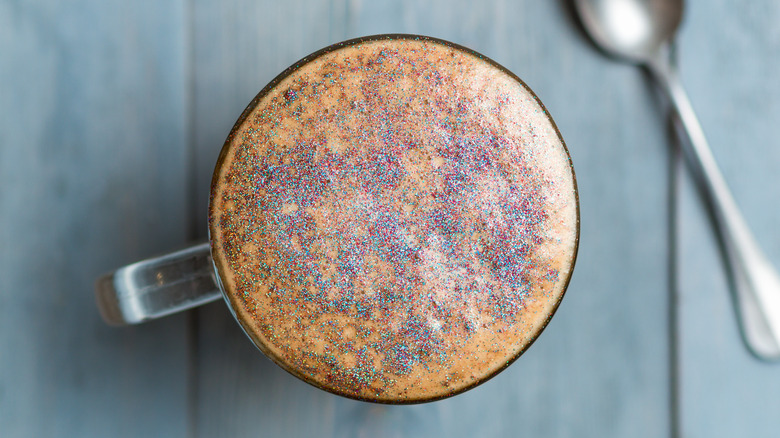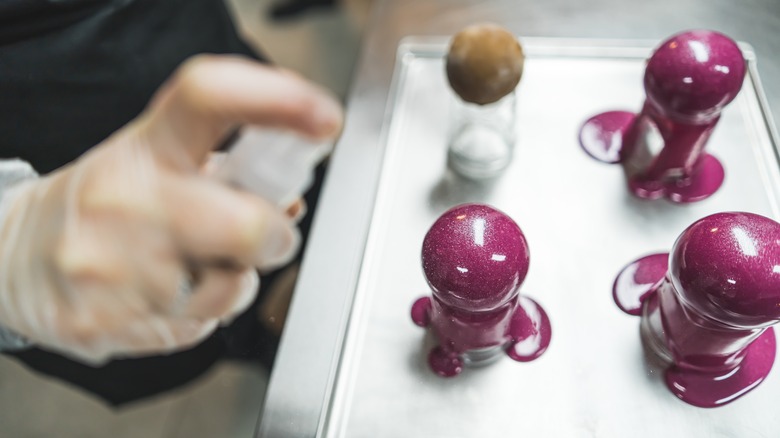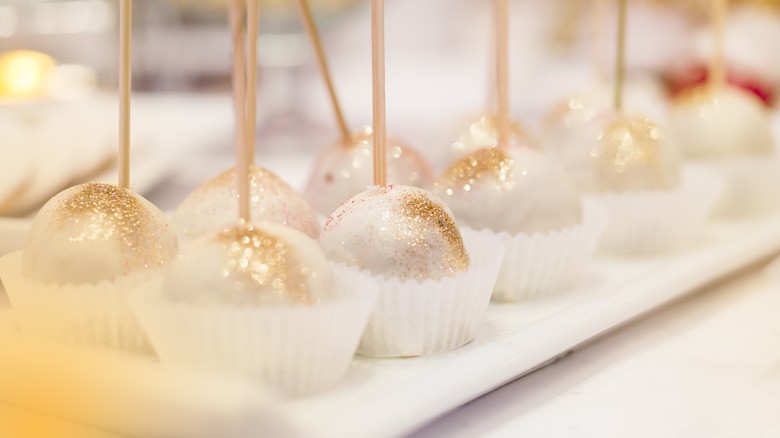How Is Edible Glitter Made?
As the old saying goes, you eat with your eyes first. In fact, several scientific studies have suggested that visual cues play a significant role in stimulating your appetite. If you're setting the table for a dinner party, regardless of how it looks related to a meal's flavor profile, you'll likely want to make your spread as aesthetically appealing as possible.
One form of food fashion is the sparkly sprinkling known as edible glitter. Glitter is trending everywhere now, and the market growth of this fancy food additive is expected to continue in the coming years. But before you binge on shiny, sweet treats, you should know how edible glitter is made. Basically, it is made from sugar, food coloring, and any number of additional ingredients to improve its color and shelf stability. Because of this recipe variability, it can be challenging to determine whether a bottle of "edible" glitter is actually safe to eat. Still, if you adhere to a few safety rules, you can dazzle with your next dessert.
Making your own edible glitter
Most iterations of this sparkly seasoning have mixers that add mass to the mixture, which can come in the form of thickening gums and gelatin. A lot of the more complicated edible glitter mixes also include extra water on top of the liquid in the food coloring. Some even have color enhancers like airbrush food coloring added in.
After all the ingredients of edible glitter have been mixed, it's time to put the colorful paste into the oven. The mixture is spread flat on a nonstick baking surface. The oven temperature necessary for an edible glitter depends on its ingredients. The simplest iteration, made from only food coloring and sugar, is baked at around 350 F for under 10 minutes, but the more liquid mixtures require a lower and slower approach. Once the glitter has been baked and hardened, it's allowed to cool and then shattered into the shiny powder that has been bedazzling more delicious desserts in the modern culinary world. Once the glitter has hardened, it's allowed to cool and then shattered into shiny powder to bedazzle delicious desserts in the modern culinary world.
Is edible glitter safe to eat?
The Food and Drug Administration (FDA) has made a set of standards regarding when that glitter-frosted cupcake sitting inside a bakery's glass display case is and isn't edible. This product is sold under innumerable names, including shimmer powder and disco dust. Fortunately, the FDA's safety instructions give you a surefire way of determining if the glitter you're using is safe to eat. There are plenty of things you could technically eat that aren't actually safe to put into your body.
When choosing an edible glitter to add to your next dish, make sure the bottle has "edible" written on the label. Other classifications, like non-toxic, do not carry the same safety guarantee as the edible label. You should also ensure that the edible glitter has a clear list of ingredients, giving you even more assurance that the powder is safe to eat. However, you should know that the FDA allows certain inherently inedible ingredients, like titanium dioxide, to be added to the glitter in small amounts, as the science suggests that these minuscule metal quantities are insufficient to cause adverse health effects. Now that you know how edible glitter is made and how to ensure that the glitter you buy is okay to eat, you can start decorating your desserts. If you're still hesitant, don't forget that an unadorned dessert can still be delicious.


